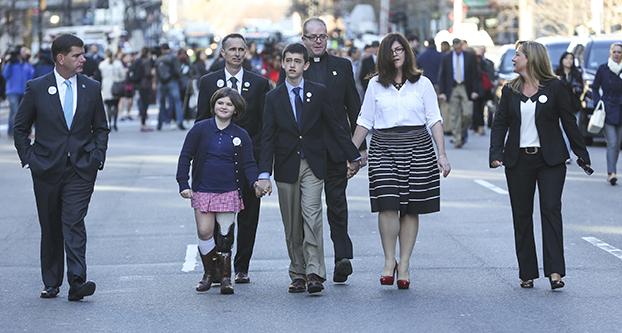Anger grips us. The rage of what happened is still fresh in our minds. The question of guilt is no longer debatable. We seek justice.
The “Boston Bomber” is guilty. Dzhokhar Tsarnaev didn’t claim innocence at trial, but rather that he was under the spell of his brother who he himself killed by running him down with a car while fleeing police.
Tsarnaev was found guilty of 30 charges, 17 of which qualify him for the death penalty.
The question remains: Does Tsarnaev deserve to die for his crimes?
I get it: We’re angry. If Tsarnaev had died during the confrontation with police, we wouldn’t have given it much of a second thought.
The death penalty exists as a deterrent to future crimes. However, executing Tsarnaev won’t prevent others from committing crimes like his. In fact, it might add a martyr factor that others might want to emulate. The deterrent has failed, but we haven’t stopped killing our prisoners.
What does execution mean? It is the government putting someone to death for his or her crimes. At least that’s what we tell ourselves.
In reality, execution is murder, too. Sure, we call it justice. But if we’re intentionally taking someone’s life from them, we’re murdering them and painting it with the pretty brush of legality.
It’s hard for some of us. Some think Tsarnaev deserves to die. Killing Tsarnaev might seem easy, but we’d be no better than him if we do.
We have to rise above our rage and look clearly at the issue. If we kill him, he will never hurt anyone ever again. But the same is true if we send him to prison for the rest of his life.
Tsarnaev is 21 years old. At such a young age, a life sentence means a lot more than if he were 40 or 50.
Must we commit murder to validate the severity of his crimes? Isn’t a life sentence punishment enough?
In the society we’ve built, we don’t believe killing is acceptable — we don’t even allow suicide. But somehow when big brother puts down someone for committing heinous crimes, why do we accept that as being OK?
How does government-sanctioned murder set us apart from an angry mob screaming for blood? It doesn’t; it’s tribal mentality, and we must give way to reason.
Yes, prisons are overflowing, and we spend a huge amount of tax dollars to keep them running. But there’s a difference between prisons being overcrowded because of our propensity to lock up non-violent offenders and the practicality of putting away murderers for 50 years.
Believe it or not, it costs more to execute someone than it does to put them in prison forever.
Our legal system puts up a lot of obstacles before we can execute someone. Those barriers, of course, are there for our safety and liberty — to make sure our rights were observed and to ensure we don’t put innocent people to death — which, of course, has happened.
No trial is perfect, and innocent people get sent to jail all the time. How can we assume we haven’t executed innocent people? We can’t.
In California, we’ve spent more than $4 billion on death penalty cases since 1978. In that time, only 13 people have been executed.
The cost of killing convicted felons is high, but the moral implications are even higher.
If we imprison Tsarnaev, it’s justice; if we execute him, it’s vengeance.
Despite our outrage, Tsarnaev must be put away — not put to death.
When we’re at our highest level of outrage, that’s when it’s most important to show a high level of humanity.




